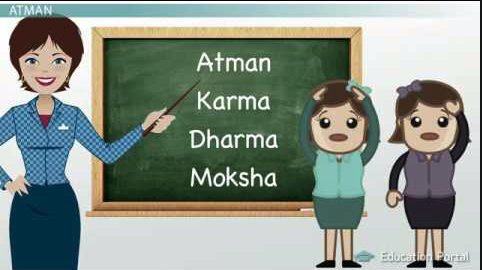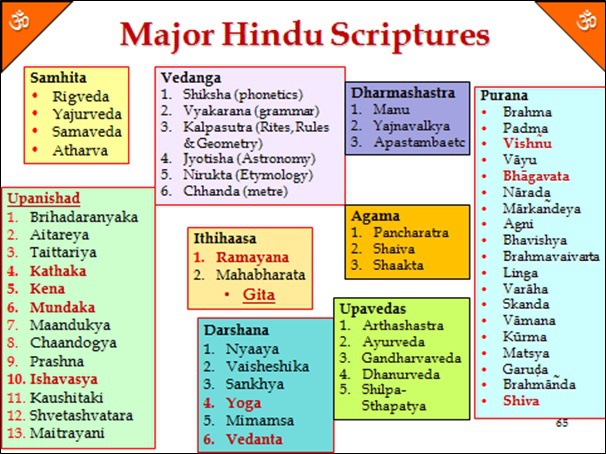This questions and answers document is prepared by a group of Hindu Speakers as a source of information for them or for any one seeking information on Hinduism. There are multiple ways of answering a single question and this group is not claiming to provide all potential answers here.

On Hinduism
The target audience is 9th grader Abrahamic students in American Schools but it will be useful to anyone interested in learning about Hinduism. All answers are designed to answer in about a 3 minute time frame. We have also provided links to other reading materials and video links relating to each question.
Considering Hindu speakers are invariably asked some sensitive geopolitical questions, we have included some potentially sensitive topics here to help speakers answer them from Hindu perspective. However we wish to clarify that this group is composed of Hindus but the group does not have any political affiliation.
Questions starting with “z” are being worked on now. We hope to list some 300 questions and answers below.
If you wish to review these questions and answers in the PDF format, here it is.
If you have any feedback on these QAs, please write to HinduSpeakers@gmail.com. Thank you.

07. Scriptures
No. However, there are numerous Hindu texts that hold the equivalent importance amongst Hindus. Vedas, Upanishads, Puranas are some examples. Then, there are some others such as The Bhagavad Gita. In the vast Hindu scholarship, an attempt to cast one book as the “Bible of Hindus” will probably be a fruitless pursuit.
.
Other reading material: Short answers to real questions about Hinduism
Relevant videos:
Contributor: Rajeev Singh
Just like the Bible and Quran are the fundamental scriptures for Christianity and Islam, the Vedas are Hinduism’s oldest and most important scriptures. Vedas are meditations that explore the nature of reality, or the “Truth”, and are classified into 4 books. Each of the 4 Vedas have 4 sections:
- Samhitas – Hymns
- Brahmanas – Priestly Manuals
- Aranyakas – Forest treatises
- Upanishads – Enlightened Discourses
Upanishads are also known as Vedanta, that which comes at the end of the Vedas. They are the metaphysical discourses that are usually in an entertaining story format, with a teacher and a student, exploring the nature of “Truth”.
Upanishad, the word literally means “come sit near”. The seers of the Vedic age were used to giving public talks (similar to the stories of the Buddha giving large sermons). However, not all the secrets can be revealed to a crowd. If Einstein were asked to explain the Theory of Relativity to a crowd at the Madison Square Garden, he would likely give a lighter-weight TED-talk on his findings. Crowds do not understand nuance.
The Truth (ultimate truth) is subtle. Understanding the truth requires a preparation of the body, mind and spirit. When the student is ready, the teacher would ask the student to “come sit near”, so the truth may be revealed with clarity and precision. The Upanishads record the Truth with nuance, clarity and precision. It is best to approach these texts with reverence and a reasonable estimation of one’s readiness.
.
Other reading material: Book-The Upanashads by Eknath Easwaran,
Relevant videos:
Hinduism has a long line of scriptural traditions that continue to evolve to this day.
Hinduism’s core scriptures are Shruti (that which is heard, eg. Vedas), Smriti (that which is remembered, Manusmriti), Itihasa (Ramayana and Mahabharata) and Puranas. The Upanishads are also Shruti, which are sublime philosophical meditations on the nature of reality, the Self (Atma), and the permanent and unchanging Brahman (Divinity/God/God substance). Within the Mahabharata is actually contained the Bhagavad Gita, perhaps the text most familiar to non-Indians/Hindus, which describes paths for liberation and also elaborates on both righteous duty (dharma) and the states of detachment (vairagya) under which such duty needs to be undertaken.
Even after these original scriptures were composed, Hindus continued to create new variants. The Ramayana itself has been adapted multiple times with minor and major variations, including in Hindi as the Ramacharitmanas of Tulsidas. Many other religious texts have developed in various sampradayas, panths, maths, and other religious organizations which are too numerous and substantial to summarize here.
The Hindu corpus is alive, not just through the reinterpretation of old scriptures but in the writing of new scriptures.

Contributors: Madhukar Adi & Raman Khanna
